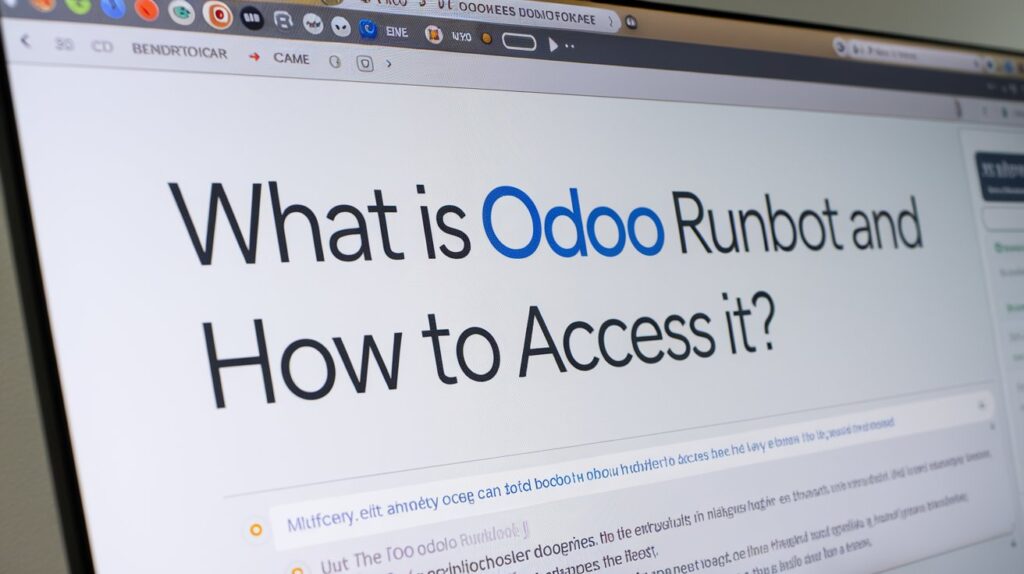When exploring the vast ecosystem of Odoo, especially as a developer, functional consultant, or business owner evaluating ERP solutions, one tool that stands out for quick testing and hands-on experience is Odoo Runbot. But what exactly is Odoo Runbot? Why is it useful? And how can you use it to test different Odoo versions, modules, and features in real-time, without setting up your local environment?
In this guide, we’ll cover everything you need to know about Odoo Runbot, how it works, how to access it, and how you can use it efficiently in your Odoo journey.
Table of Contents
What is Odoo Runbot?
Odoo Runbot is an online, web-based platform provided by Odoo S.A. that allows you to instantly access and test different versions of Odoo in a live demo environment. It is essentially a continuous integration testing server that automatically builds and deploys Odoo instances from the source code hosted on GitHub.
Put simply, Runbot lets you:
- Test Odoo features in the Community or Enterprise edition
- Try out different Odoo versions (Odoo 13, 14, 15, 16, 17, etc.)
- Explore new modules without installation
- See how code changes behave in real-time
- Evaluate features as an end user or developer
For developers and functional consultants alike, it’s a free and quick way to experiment with Odoo, without having to install it on your local machine.
Why is Odoo Runbot Important?
Odoo Runbot is not just another demo site—it’s a vital tool for developers, functional consultants, trainers, and even business owners. It removes technical barriers and provides instant access to a wide variety of Odoo environments. Here’s why it’s such an essential resource:
1. No Installation Required – Instant Access in Your Browser
One of the biggest hurdles when working with ERP software is the initial setup. Installing Odoo locally can be time-consuming, especially for non-technical users. You need the right system dependencies, Python libraries, PostgreSQL, and module configurations.
With Odoo Runbot, all of that complexity disappears.
You simply visit the Runbot website, select the version you want to explore, and launch a live Odoo instance in your browser. It only takes a few seconds. This makes Runbot extremely useful for:
- Quickly testing new features
- Demonstrating functionality to clients
- Experimenting with different workflows without the fear of breaking anything
And the best part? You don’t need to be a developer or have any technical knowledge to use it.
2. Access to All Odoo Versions
Odoo is an actively developed platform with multiple versions, including:
- Long-term supported (LTS) stable versions like Odoo 17, 16, etc.
- SaaS branches that represent the versions used in Odoo Online (e.g., saas-17.2, saas-17.3)
- The Master branch, which is the bleeding-edge development version
Runbot gives you direct access to all of these, allowing you to:
- Test features that are coming in future releases
- Compare performance and behavior between versions
- Validate module compatibility before an upgrade
- Understand what has changed across versions from a user or developer perspective
If you’re planning to upgrade your Odoo instance or working on version-specific development, this kind of instant version switching is a huge time saver.
3. Developer-Friendly Testing Environment
For developers contributing to the Odoo core or building custom modules, Runbot offers a powerful advantage.
It is tightly integrated with Odoo’s GitHub repositories. Every time a developer pushes new code or submits a pull request, Runbot automatically:
- Builds a new environment
- Installs the updated codebase
- Runs automated test cases
- Makes a live instance publicly available for review
This continuous integration (CI) process ensures that new changes are validated quickly and efficiently. Developers can test their code across multiple branches and confirm whether the latest features or bug fixes work as expected, without deploying anything manually.
It’s a highly efficient workflow that enhances code reliability and collaboration within the community.
4. Perfect for Learning, Training, and Client Demonstrations
If you’re a new Odoo user, an ERP consultant training staff, or someone teaching others how Odoo works, Runbot is an ideal solution.
It offers a risk-free learning environment, where you can:
- Test different business flows like Sales, Inventory, HR, or Accounting
- Try out specific modules or apps without impacting real data
- Train teams on how to use Odoo with real-time interaction
- Simulate real-world business cases during workshops or client demos
Since every instance is temporary and isolated, there’s no fear of accidentally deleting or modifying sensitive data. It’s a safe place to play, learn, and teach.
5. Compare Enterprise vs Community Editions Easily
Odoo is available in two main editions:
- Community Edition – 100% open source and free
- Enterprise Edition – Includes advanced modules and premium features
With Runbot, you can test both editions side-by-side. Each version build allows you to choose between:
- A base setup with only essential modules
- An all-inclusive setup with every module, including Enterprise features
You can explore premium apps like:
- Odoo Studio
- Helpdesk
- Sign
- Documents
- Subscription Management
- Field Services
This is especially useful when you or your client are evaluating which edition is right for the business. Instead of relying on documentation or sales pitches, you can interact with the software directly.
How to Access Odoo Runbot
You can access Odoo Runbot directly through this URL:
Once you’re on the site, here’s how to navigate it:
1. Choose the Odoo Version
The homepage lists several Odoo versions (e.g., 17.0, 16.0, saas-16.3, master). These represent different development stages:
- Stable versions (like 17.0): Used in production
- SaaS branches: Staging or interim cloud versions
- Master: The latest under-development branch
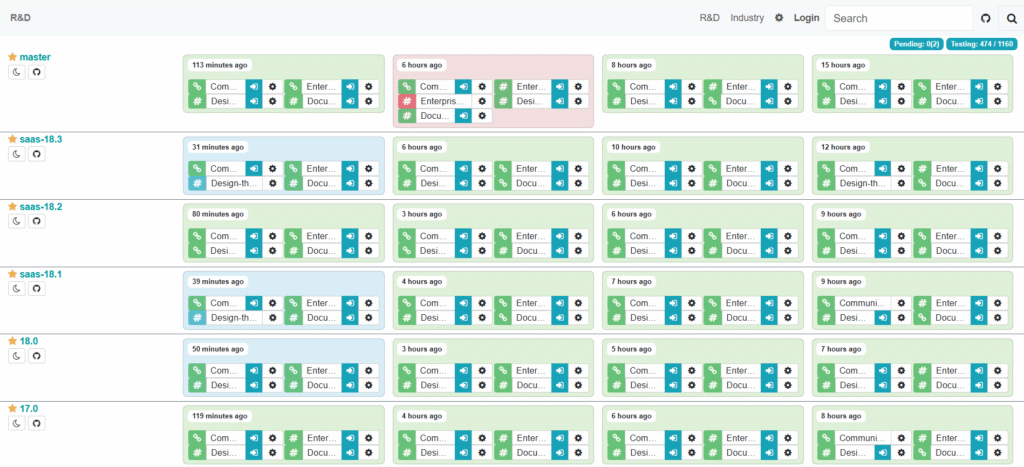
Click the version you want to test.
2. Select a Build
When you visit the Odoo Runbot homepage, you’ll notice a grid of boxes highlighted in different colors—primarily green and red. These color codes help users quickly understand the status of each build.
- Green boxes indicate that the Odoo build is active and functioning properly. You can safely access and test these versions without any issues.
- Red boxes, on the other hand, mean the build is inactive or has failed, usually due to a code error or failed automated test.
To launch a specific version of Odoo, simply click on the blue “Connect” button located within the green box of your desired build. This will instantly open a live instance of that Odoo version in your browser, allowing you to explore its features and modules hands-on, without installing anything.
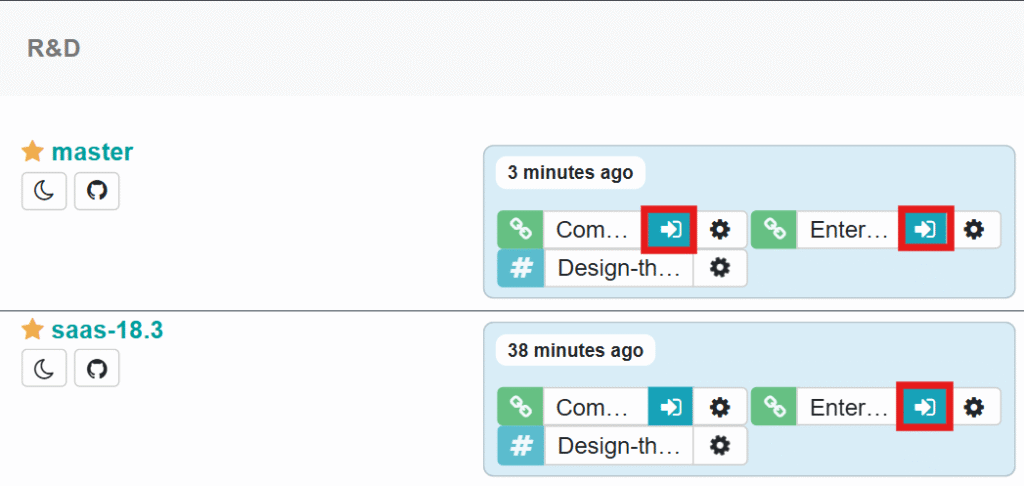
- All = Full installation with most modules
- Base = Minimal installation, faster loading
3. Log In to the Instance
Each Runbot instance comes with default credentials:
Email: admin
Password: admin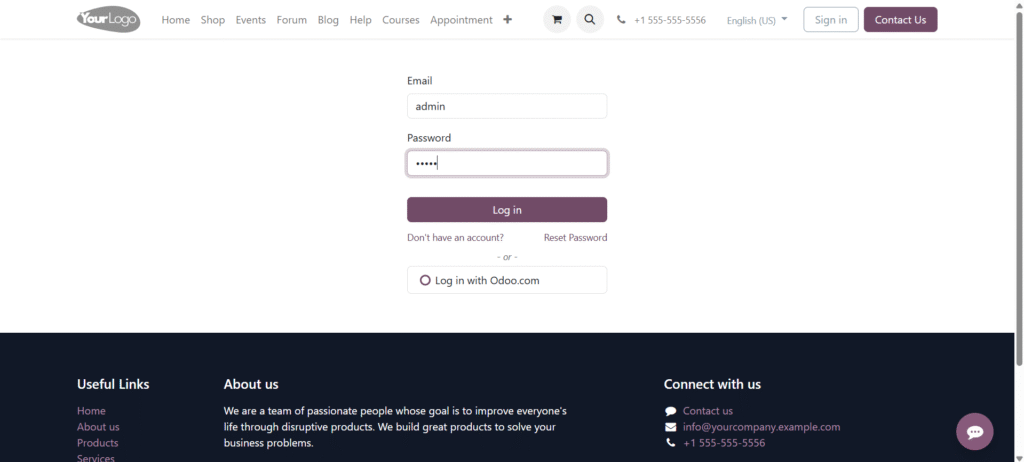
You can now test, explore modules, or customize settings freely in this temporary environment.
Navigating the Odoo Runbot Interface
When you open the Odoo Runbot interface, you’ll notice several builds listed by version, like master, saas-18.3, saas-18.2, and so on. Each version contains a set of interactive buttons and dropdown options to help you test and understand how that version of Odoo works.
The gear icon ⚙️ on the right side of each build allows you to access a list of advanced actions. Here’s what each option means:
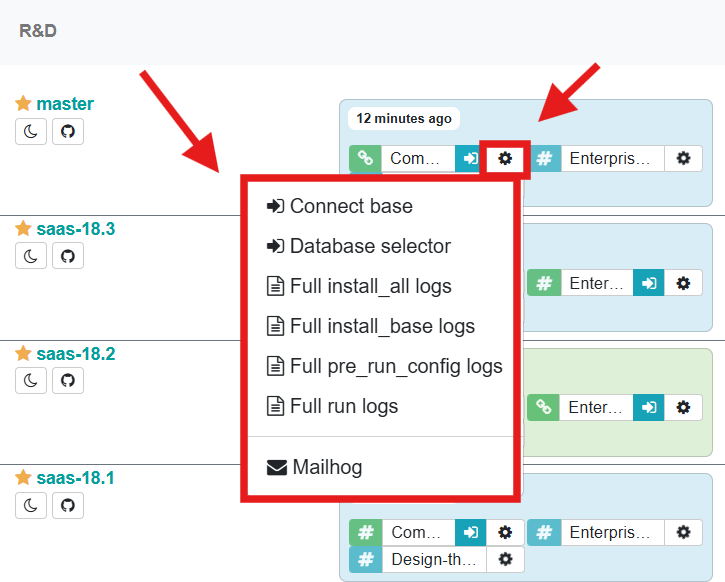
1. Connect the base
This is your entry point into the Odoo instance. Clicking “Connect base” launches a clean version of the selected Odoo build with the default set of modules and no customizations. It’s perfect for exploring the core features and interface of that particular version.
2. Database selector
If multiple databases have been set up under that build, this option lets you choose which one to access. It’s useful if you or other users have created demo data, different test environments, or sandbox setups within the same build.
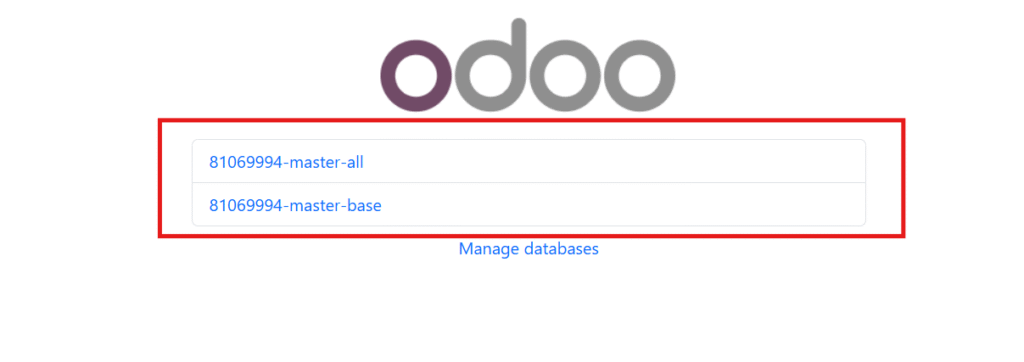
3. Full install_all logs
This provides a complete log of everything that happened during the installation of the Odoo build, including base and additional modules. Ideal for developers who want to debug or understand what components were loaded.
4. Full install_base logs
This log shows only the installation details for the base modules. If you’re troubleshooting startup issues or base app errors, this is the place to look.
5. Full pre_run_config logs
These logs reflect the configuration steps executed before the system fully starts, such as setting up environment variables, paths, or specific configurations defined in the .conf file.
6. Full run logs
These are live logs captured while the Odoo instance is running. It includes real-time backend processes, warnings, and server outputs. Very useful for developers working on debugging or analyzing module behavior.
7. Mailhog
Odoo often sends emails for user signup, password resets, and sales operations. Runbot integrates Mailhog, an email-catching service, allowing you to view all outbound emails sent from the system, without sending them to real email addresses. This is perfect for testing email workflows.
Limitations of Odoo Runbot
While Runbot is a great resource, it’s important to know its limitations:
| Limitation | Description |
|---|---|
| Temporary Instances | Instances are reset regularly (not for long-term use) |
| No Data Persistence | Your changes will be lost once the session expires |
| Public Access | Not suitable for sensitive data or private testing |
| Limited Resources | Performance may be slower compared to local setups |
It’s a demo and test environment, not meant for actual business use.
>> How to Add a Button to the Action Menu in Odoo 17
>> Understanding OWL JS Lifecycle Hooks in Odoo 17
>> How to Change the Color on a Progress Bar in Odoo 17
Final Thoughts
Odoo Runbot is a powerful, underutilized tool in the Odoo ecosystem. Whether you’re an Odoo developer testing code, a consultant giving product demos, or a business owner evaluating ERP solutions, Runbot provides a risk-free, cost-free, and hassle-free environment to experience the power of Odoo.
With access to multiple versions, modules, and both editions (Community and Enterprise), Runbot is the perfect playground for learning, testing, and training—without writing a single line of setup code.
If you’re looking for Odoo implementation, customization, or consulting, feel free to reach out. Whether you’re a business looking to optimize workflows or a developer wanting to build custom modules, we’re here to help.


